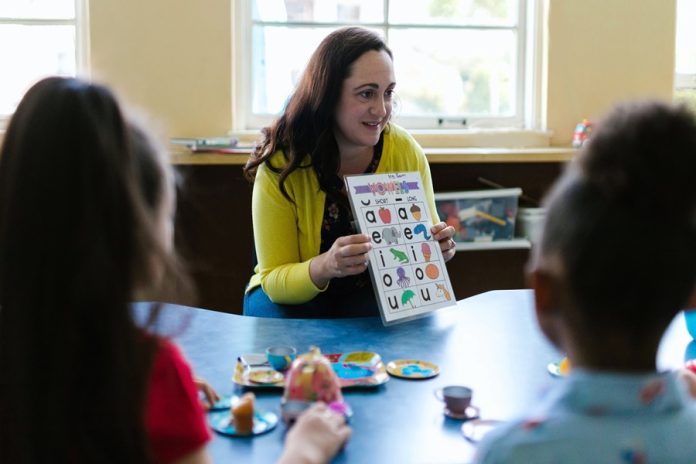What are the socio-cultural barriers to reading? Experts in literacy, Martha Hernandez and Laurie Olsen discuss the way forward for emergent bilingual children.
In 2020, we were part of a small cohort of English learner (EL) researchers and educators from across the nation who shared a growing concern about the rising emphasis on the ‘Science of Reading’. This trend had gained momentum nationwide in response to what was termed a ‘literacy crisis’.
We observed a resurgence in the adoption of two-decades-old research on reading instruction, overlooking the evidence base related to English learners and bilingual development. The prevailing narrative championed narrow reading approaches that predominantly or exclusively focused on foundational reading skills and phonics as the purported solution.
Missing was the comprehensive set of elements we knew were essential in literacy development and which we recognized as vital for second language learners. And nowhere in these discussions were goals of biliteracy addressed, nor were processes of dual language literacy development considered. Additionally, the extensive research conducted over the past two decades on reading and writing for culturally and linguistically diverse students was noticeably absent. It was in response to these gaps that we came together to establish the National Committee for Effective Literacy (NCEL).
While the media persisted in viewing the disparate voices as a revival of a longstanding ‘reading war’ (phonics vs whole language), our voices were more focused on advocating for the incorporation of second language learner considerations in the newly emerging demand for reading materials, strategies, teacher preparation and professional development. We sought to bring the field up to speed with the latest research on second language development, understanding the important relationship between oral language and literacy, recognising the significance of background knowledge, appreciating the advantages of biliteracy, and promoting cross-language connections in literacy education for English learners.
Fast forward two years, and we contributed to and signed a Joint Statement in collaboration with The Reading League, the premier Science of Reading organisation. Our support for this statement arose through two years of extensive dialogue and shared concern about the increasing use of ‘science of reading’ as ‘a buzzword and a lightning rod’ in the greater field of education. Our team of EL/bilingual researchers collaborated closely with researchers from The Reading League, delving into research to collectively offer united and cohesive guidance to the field on reading instruction and literacy development for EL students. The Joint Statement sought to unite a community of experts around a comprehensive body of knowledge impacting literacy development, and to clarify that many practices labelled as SOR do not align with scientific evidence for ELs. The agreement within the Joint Statement highlights the principles of effective evidence-based reading instruction and the need for a comprehensive approach for multilingual learners (MLLs).
One of our primary objectives was to dispel a prevalent misconception surrounding the science of reading, specifically challenging the widespread belief that it exclusively focuses on foundational reading skills.
A key breakthrough embedded in the Joint Statement is the repositioning of foundational reading skills – such as phonics, word recognition, and phonemic awareness – as components within a comprehensive literacy approach for MLLs. A comprehensive program, as defined in the statement, goes beyond foundational skills and includes language development, the development of content knowledge, vocabulary, effective expression, meaning making and explicit, systematic instruction in foundational skills essential for decoding and encoding.
The statement highlights the importance of oral language development and dedicated time for English Language Development (ELD). Additionally, for our multilingual students, this comprehensive literacy approach emphasizes leveraging the home language and fostering cross-language connections throughout the literacy development process, with the ultimate goal of achieving biliteracy. This kind of comprehensive literacy instruction recognizes the profound interconnections among knowledge, language, and literacy.
When asked if we support phonics instruction, our response is a resounding ‘yes AND…’. Phonics is an important component of a comprehensive approach along with other critical interrelated elements of literacy development. Contrary to some misconceptions, phonics isn’t the sole pathway to reading proficiency. Nor should it claim the spotlight as the primary component. Rather, it plays an essential role in early literacy, guiding students to make sense of letter-sound relationships and introducing them to the basic decoding/encoding principle that transforms language into print/text form.
Together with strong oral language development and vocabulary development, phonics serves as the mechanism for recognizing language and meaning in print form. However, its efficacy hinges on relationship to the other components. For English learners, mastering the sounds, phonemes/morphemes of English, building sufficient vocabulary in English as well as learning how English works must accompany phonics instruction. These elements – language development, foundational skills, comprehension strategies, knowledge/content development, ESL/ELD, vocabulary development, and cross-language connections with home language – together, form the comprehensive literacy approach essential for multilingual learners to achieve literacy.
Finally, our students don’t become readers and writers solely by acquiring literacy skills. They become readers and writers through recognizing and experiencing the purposes of reading and writing. It’s in this realization of the power of reading and writing for learning, information, voice and entertainment that true literacy blossoms. Achieving this revelation involves frequent access to and active engagement with materials that reflect student’s own lives and communities while offering glimpses into a broader world. It’s about seeing their identity within literacy: ‘People like me are in books. People like me are writers. This is a tool for me.’ Comprehensive literacy instruction couples a skills-focused approach to the mechanics of reading and writing with an emphasis on fostering engagement and shaping robust literacy identities.
The Joint Statement, while a significant achievement, is a partial step, leaving room for future dialogues to address additional key issues related to socio-cultural aspects of literacy development, biliteracy pedagogy, print access and opportunity, literacy identity, and the impact of language status on literacy development. The collaboration between The Reading League and the National Committee for Effective Literacy has produced an important tool for educators and advocates by outlining the principles of evidence-based reading instruction and calling for a comprehensive and interconnected approach to literacy development. As the education landscape continues to evolve, may the Joint Statement help guide practitioners towards literacy education that embraces multilingual learners.





